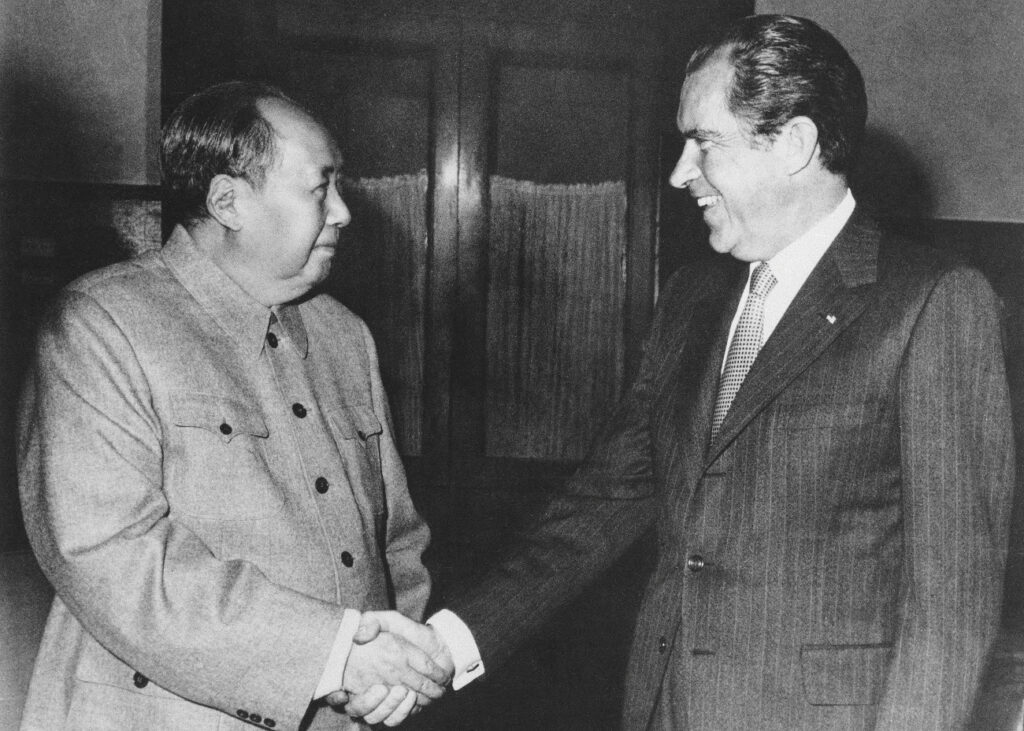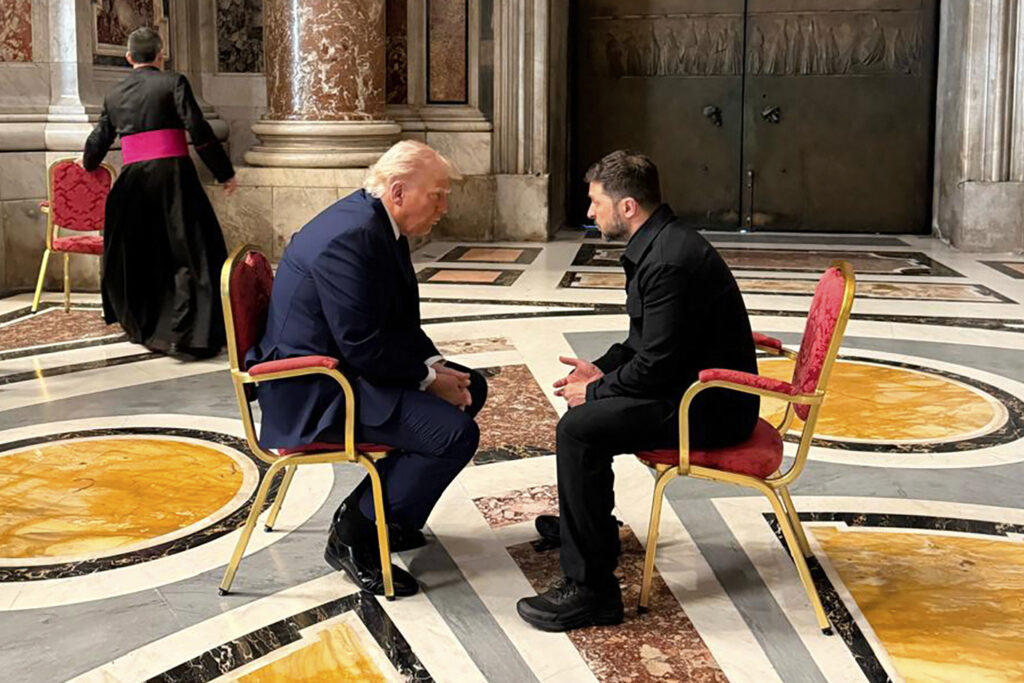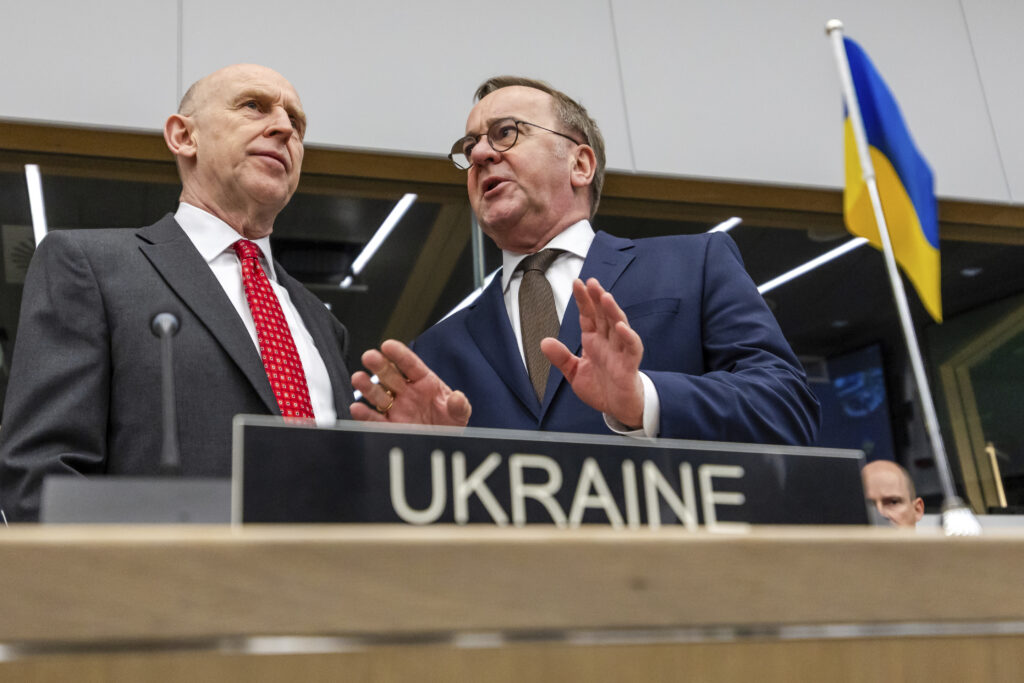Kremlin Tries To Drive a Wedge Between America and Europe | The New York Sun
As a 25-year-old real estate developer in New York, Donald Trump was impressed with Richard Nixon’s breakthrough visit to Communist China in 1972. In later years, Mr. Trump cultivated a friendship with Nixon, inviting the former president to move into Manhattan’s Trump Tower.
Now in the White House for the second time, Mr. Trump has spent much of his first 100 days clearing barriers between Russia and America. Some say Mr. Trump, a believer in big power politics, wants to do a Nixon-in-reverse: Lure Moscow away from Beijing.
Evidence from Moscow, though, indicates that the Kremlin is pursuing a different big power agenda: lure Washington away from Brussels. From the Crimean War to the Cold War, Russia has long seen a united Europe as its main enemy. This spring, Europe’s core powers — Britain, France, Germany, and Poland — are moving rapidly to fill Uncle Sam’s shoes in arming Ukraine.
“Russia and the United States, as great powers, historically bear special responsibility for the fate of the world,” a Kremlin aide, Nikolai Patrushev, told Moscow’s Kommersant newspaper last week. Secretary of Russia’s security council until last year and a key architect of Russia’s 2022 assault on Ukraine, Mr. Patrushev added: “The experience of past decades or even centuries shows that in the most difficult crisis moments our countries have always managed to overcome their differences.”
 The Chinese Communist Party leader, Mao Zedong, and President Nixon at Beijing on February 21, 1972. AP, file
The Chinese Communist Party leader, Mao Zedong, and President Nixon at Beijing on February 21, 1972. AP, fileA British analyst of Russia, Mark Galeotti, posted on X that the interview is the “latest example of the Kremlin’s attempt to present itself as an ally of the USA against an untrustworthy Europe.” One week earlier, the press office of Russia’s Foreign Intelligence Service posted an essay headlined: “Eurofascism, like 80 years ago, is the common enemy of Moscow and Washington.”
Going back 170 years to the Crimean War, the intelligence agency argues: “The sympathies of the White House in this confrontation were on the side of St. Petersburg.” Jumping forward one century, the author writes: “There have been many moments when Washington and Moscow became partners in opposing London and Paris in the international arena. A typical example of this is the Suez Crisis of 1956. The tough position of the USSR and the USA stopped the triple aggression of Great Britain, France, and Israel against Egypt.”
Looking ahead to a future Russia-America alliance, the author writes: “Foreign expert circles express hope for a new unification of efforts by Moscow and Washington, capable of preventing the world from sliding into a new global conflict and resisting possible provocations from both Ukraine and the ‘crazy Europeans,’ traditionally egged on by Great Britain.”
Illustrating the essay is a Soviet-style cartoon showing the European Commission president, Ursula von der Leyen, as an evil hawk. Her arms and legs are twisted into a swastika. Red blood drips from her talons. She is being stabbed by bayonets labeled with American and Russian flags.
In reality, Ms. von de Leyen has been notably absent from the stream of European leaders visiting the White House during the first 100 days of the new Trump presidency. Early in this term, Mr. Trump charged that the European Union was “formed in order to screw the United States.”
 Presidents Trump and Zelensky speak as they attend the funeral of Pope Francis at the Vatican, April 26, 2025. Ukrainian Presidential Press Office via AP
Presidents Trump and Zelensky speak as they attend the funeral of Pope Francis at the Vatican, April 26, 2025. Ukrainian Presidential Press Office via APOn Saturday at the funeral of Pope Francis at Rome, Mr. Trump greeted the European leader in passing. He reportedly agreed to schedule a meeting. After Mr. Trump imposed 25 percent tariffs on EU cars, steel, and aluminium last month, both blocs now seem to be moving in the direction of a trade war.
Bolstering the geographic sphere of influence worldview, the Kremlin does not protest Mr. Trump’s stated desires to take Greenland from Denmark and to incorporate Canada into the United States. Denmark and Canada are founding signers of the North Atlantic Treaty, the transatlantic alliance founded in 1949 to block the Soviet Union.
These worries and the issue of defending Ukraine could severely strain ties between America and Europe at the next summit of the North Atlantic Treaty Organization, set for the Hague on June 24. For Ukraine, Europe, and the United States advocate competing peace formulas. Europeans argue that Mr. Trump is far too soft on Russia.
Mr. Trump says he would change American policy and recognize Crimea, the Ukrainian peninsula that President Putin grabbed by force in 2014. Europeans argue that recognition would open a Pandora’s box of competing land claims. For three generations in Europe, international law has prevailed. Territorial disputes have largely lain dormant.
On the issue of arming Ukraine to block Russian expansionism, Europeans increasingly take a hard line. Studying Russian military base construction, Europeans fear that after Ukraine, Russia could attack Finland or the Baltics.
 Britain’s defense secretary, John Healey, left, talks with Germany’s defense minister, Boris Pistorius, at NATO headquarters, Brussels, April 11, 2025. AP/Geert Vanden Wijngaert
Britain’s defense secretary, John Healey, left, talks with Germany’s defense minister, Boris Pistorius, at NATO headquarters, Brussels, April 11, 2025. AP/Geert Vanden WijngaertOn Sunday, Germany’s defense minister, Boris Pistorius, told German public broadcaster ARD that Kyiv “should not go as far as the latest proposal by the American president.” To do so, he said, would be “capitulation. I cannot see any added value.”
Reflecting the growing gap between Europe and America, a close ally of the chancellor-to-be of Germany, Friedrich Merz, warned last week that Europe should not accept the Trump administration’s cease-fire proposal for Ukraine. Speaking on German TV, a senior Bundestag member, Thorsten Frei, said, “Putin would achieve all his goals and the message that would be sent out would be: ‘I can afford such aggression. I will prevail in the end and achieve my goals’.”
Mr. Putin, in what can be seen as a message to Germany’s new conservative government, signed a decree last night renaming the airport at Volgograd as Stalingrad. That was the name of the city between 1925 and 1961, and the place where, in 1942 and 1943, the Soviet army defeated Nazi German troops in the biggest battle of World War II.
Was this article displayed correctly? Not happy with what you see?
If you often open multiple tabs and struggle to keep track of them, Tabs Reminder is the solution you need. Tabs Reminder lets you set reminders for tabs so you can close them and get notified about them later. Never lose track of important tabs again with Tabs Reminder!
Try our Chrome extension today!
Share this article with your
friends and colleagues.
Earn points from views and
referrals who sign up.
Learn more
Save articles to reading lists
and access them on any device